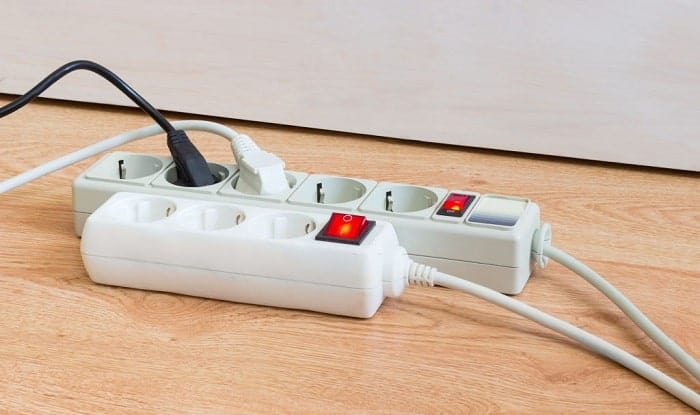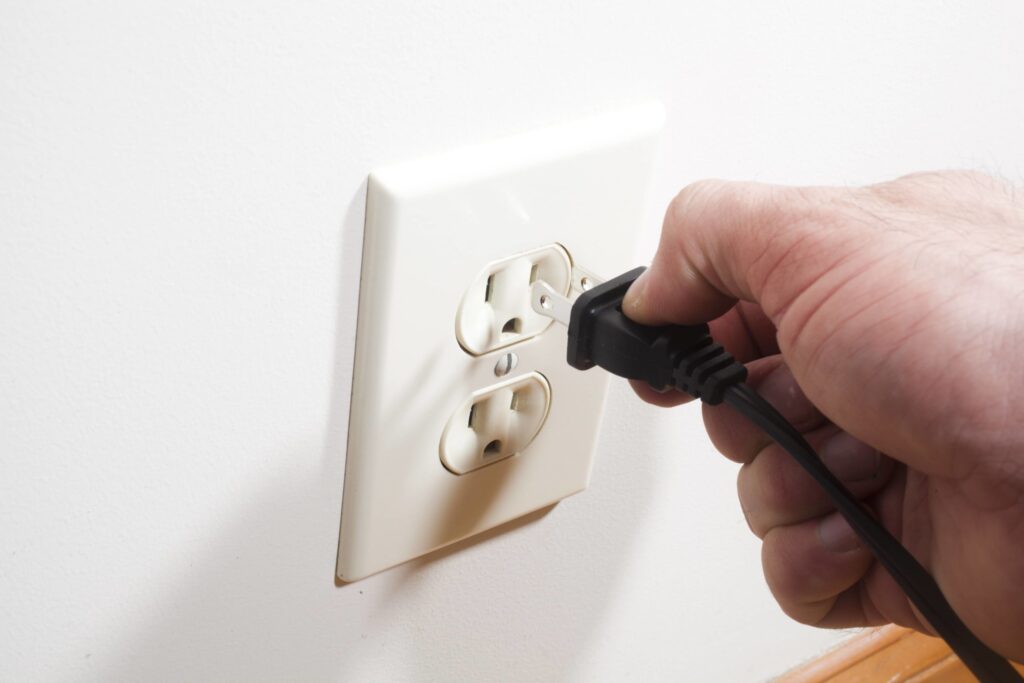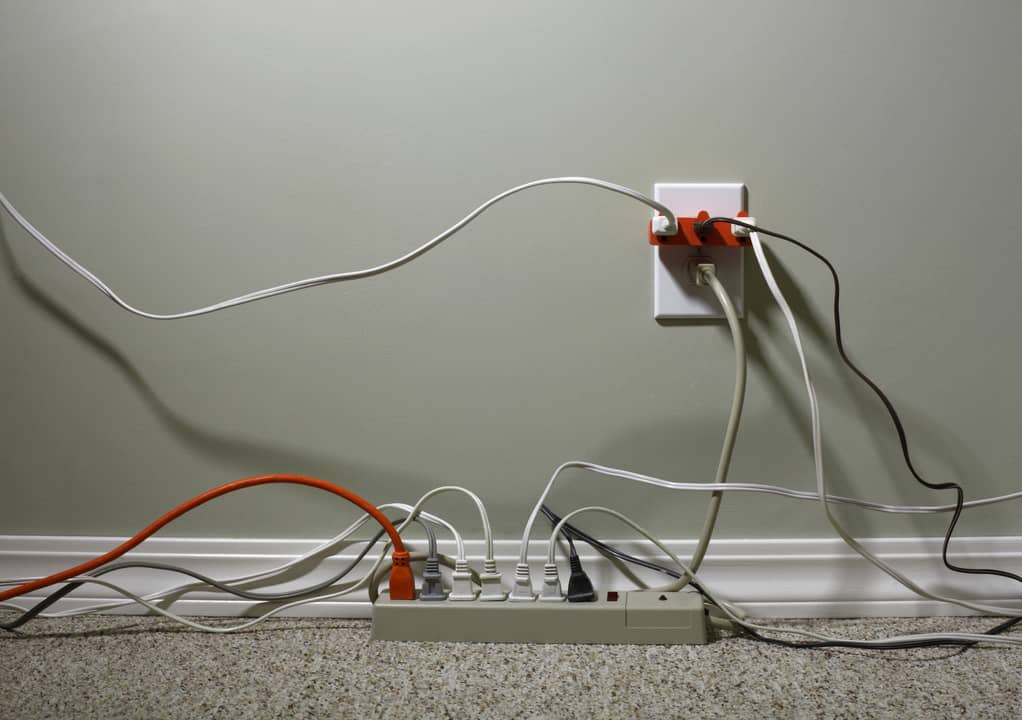Have you been having concerns on how many receptacles you can place on a 20 amp circuit? Having this sort of concern is completely normal and you are not the only one with this concern. It is also okay to think that you will be overloading the circuit when you connect or place too many appliances on it. This post talks about how many receptacles on a 20 amp circuit, and ways you can properly manage your 20 amp circuit.
One interesting point everybody must note is the National Electric Code doesn’t place any form of rule on limiting installments on your circuit, but it is very essential that you have a clear understanding of power draw restrictions. Generally speaking, you are suppose to have not more than ten outlets places on a 20 amp circuit, and we urge you to continue reading if you want to find out why it shouldn’t exceed 10 outlets.
Content Navigation
The 20 Amp Circuit

You can power one or two bedrooms using a typical 20 amp circuit, and the 20 amp circuit is one of the most common ratings you are likely to find among overhead lights and several outlets. What we want you to know is there are different amps that will be ideal for different sizes of wires, and it will interest you to note that the 15 amp circuit is compatible with the 14 gauge wire. The case isn’t the same with a 20 amp circuit, and you must be wondering why.
When you pair a 20 amp circuit with a 14 gauge wire, it results into overloading, and this tells you this connection is very unconventional. This means it will make more sense when you pair a 20 amp circuit with a twelve or ten wire gauge.
Do not think a 20 amp circuit has a 20 amp current flow, but this measurement helps in telling you the amount of power that can safely pass through the circuit without overloading or causing a damage to the circuit.
Related Post – How To Tune An Amp Using A Multimeter
How Many Receptacles On A 20 Amp Circuit

Back to the main point of bringing you this post, the truth remains that you can place as much receptacles as you want on a 20 amp circuit, and having multiple outlets paves way for an even distribution of power. No matter how smooth or sweet this sounds, it has a setback, The power draw as a result of the numerous outlets you have placed on the 20 amp circuit is likely to cause a fire hazard, tripped breaker, or overheating.
No matter who laid out the electricity plans in your home, whether it is a paid electrician or you did it yourself, there should be provision for electricity load management. Theoretically speaking, a 20 amp circuit can carry as much as thirteen devices at once, but this is a huge no practically speaking because of all the risks involved. Doing this simply means some or most of the devices connected will not have as much power as they ought to.
If a circuit is about ninety percent occupied, it is likely to cause its breaker to trip. This is why the National Electric Code has stated that a circuit should be occupied about seventy five or eighty percent but not ninety. The remaining twenty or twenty five percent is considered as the free space in the circuit because there are some appliances that might consume huge amount of electricity, or if there is an unexpected power surge.
How Can You Manage Outlets Properly
It is impossible for a receptacle to draw current unless it is connected to something that prompts it to, but there is a very huge tendency for things to go wrong if you are planning to make use of all the ten electrical outlet limits on any 20 amp circuit you have in your home. What we want you to have in mind is not all circuit or areas are designed to consume equal amount of power, and the reason for this is because all appliances are not designed to be same.
I bet you didn’t know that there are places inside the house that are referred to as high electrical consuming areas of your home, and the bathroom and kitchen are perfect examples of these areas. This is why it is not advisable for you to share a 20 amp circuit for use in the kitchen and bathroom as it can result in very serious damages. Electrical damages and overheat are likely to happen if your bathroom and kitchen share the same 20 amp circuit.
This is why it is very crucial that you set aside a layout plan before you start installing outlets in your home. The next question that will pop up on your mind is how to make a layout plan, but do not worry as that is what next we will be helping you with in this detailed article.
Interesting Post – How To Connect A Powered Subwoofer To Passive Speakers
Making A Layout Plan
Merging your lights to one circuit is the best way to start your layout plan, and merging lights to one circuit is safe as lights draws a low amount of power compared to several other devices. This means this method completely safe, while the electric stove and dishwasher in the kitchen shouldn’t share the same outlets under a 20 amp circuit. Dividing outlets in your kitchen into separate outlets is vital, and adding some lights helps in creating a balance.
There is a room that every wall should have its own outlet in bedrooms, and this is why you are recommended to place each outlet in the bedroom six feet apart. Having a 20 amp circuit in your bedroom to serve for the lights and other outlets is just perfect, and one important fact we want you to have in mind is you might end up making use of one or two outlets at the same time despite installing several others in your circuit.
Installing outlets under the National Electric Code guidelines and placing them in easy to reach areas is one of the best advice we can leave you with in this post. If you have any questions regarding this, be sure to reach out to us in the comment section of this post.
Final Thoughts
The answer to how many receptacle on a 20 amp circuit is ten outlets, and do not get confused when we mention the word receptacles. It simply means the same as an outlet, and it is very crucial that you follow the National Electric Code’s eight percent rule when working with a 20 amp circuit. Another point to note is the compatibility of your outlets, wire sizes, and circuits to help in avoiding electrical hazards and overheating.
Also remember to properly spread outlets evenly inside your home, and also do not forget the fact that the bathroom and kitchen are areas considered to consume electric more in every home.

